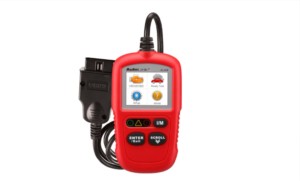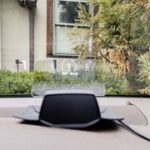The Check Engine Light (CEL) is a crucial part of your car’s onboard diagnostics system. It signals a problem detected by the Engine Control Unit (ECU). This light doesn’t specify the exact issue, but warns of a potential problem requiring further diagnosis. A common way to diagnose the problem is with an Autozone Free Obd2 Check.
AutoZone Free OBD2 Check: Get a Free Fix Finder Report
AutoZone offers a complimentary Fix Finder service, providing an autozone free obd2 check to diagnose warning lights like the Check Engine Light. Visit your local AutoZone, and their experts will use an OBD2 scanner to retrieve trouble codes and provide a detailed report. This report, available in both print and digital formats, identifies the issue, suggests solutions, and recommends necessary parts. Leverage the autozone free obd2 check to get back on the road safely and efficiently.
 AutoZone Fix Finder
AutoZone Fix Finder
Common Reasons for a Check Engine Light
Several issues can trigger the Check Engine Light. Some common culprits include:
1. Loose or Damaged Gas Cap
A loose or faulty gas cap can disrupt the evaporative emissions system, leading to fuel vapor leaks. This triggers the CEL. Tightening or replacing the gas cap often resolves the issue.
2. Oxygen Sensor Problems
Oxygen sensors monitor unburned oxygen in the exhaust. A faulty sensor affects fuel efficiency and can damage spark plugs or the catalytic converter. Replacing a malfunctioning sensor is crucial.
3. Engine Misfires
Engine misfires occur when the air-fuel mixture doesn’t ignite properly. Causes include defective ignition coils, fuel injectors, vacuum leaks, worn spark plugs, or bad compression. Addressing the root cause is vital to prevent engine damage.
4. Mass Airflow Sensor (MAF) Issues
The MAF sensor measures air entering the engine. Leaks, dirt, or oil contamination can disrupt its function, triggering the CEL. Cleaning or replacing the sensor, and checking for intake leaks, are common solutions.
5. Catalytic Converter Problems
The catalytic converter reduces harmful emissions. A failing converter, often caused by underlying issues, triggers specific trouble codes. Addressing the root cause, not just replacing the converter, is crucial for a lasting fix.
Understanding OBD2 Codes with an AutoZone Free OBD2 Check
An OBD-II scanner, used during an autozone free obd2 check, retrieves Diagnostic Trouble Codes (DTCs) from the vehicle’s computer. These codes, consisting of a letter and numbers (e.g., P0420), pinpoint the problem area. Online resources and service manuals help decipher these codes.
DIY Fixes vs. Professional Help
Simple issues like a loose gas cap can be easily fixed. However, complex problems require professional attention. AutoZone’s Shop Referral Program can help you find qualified mechanics for more complicated repairs.
Preventing Check Engine Light Activation
Regular maintenance, using quality fuel, and responsible driving habits can minimize CEL occurrences. A tight gas cap also prevents unnecessary triggers.
Ignoring the Check Engine Light: The Consequences
Ignoring the CEL can lead to decreased fuel efficiency, increased emissions, worsening problems, and potential safety hazards. Addressing the issue promptly is essential.
Conclusion: AutoZone Free OBD2 Check – Your First Step
The Check Engine Light is a valuable warning sign. Utilizing the autozone free obd2 check at AutoZone empowers you to understand the underlying issue and take appropriate action. Don’t ignore this warning; get a free diagnosis and ensure your car runs smoothly and safely.
